I love the idea of growing my own herbs, but living in a small apartment can make that feel like a challenge.
The good news is that there are plenty of creative ways to make the most of the limited space I have.
With some clever planning and a bit of imagination, I can transform even the tiniest nook into a thriving herb garden.
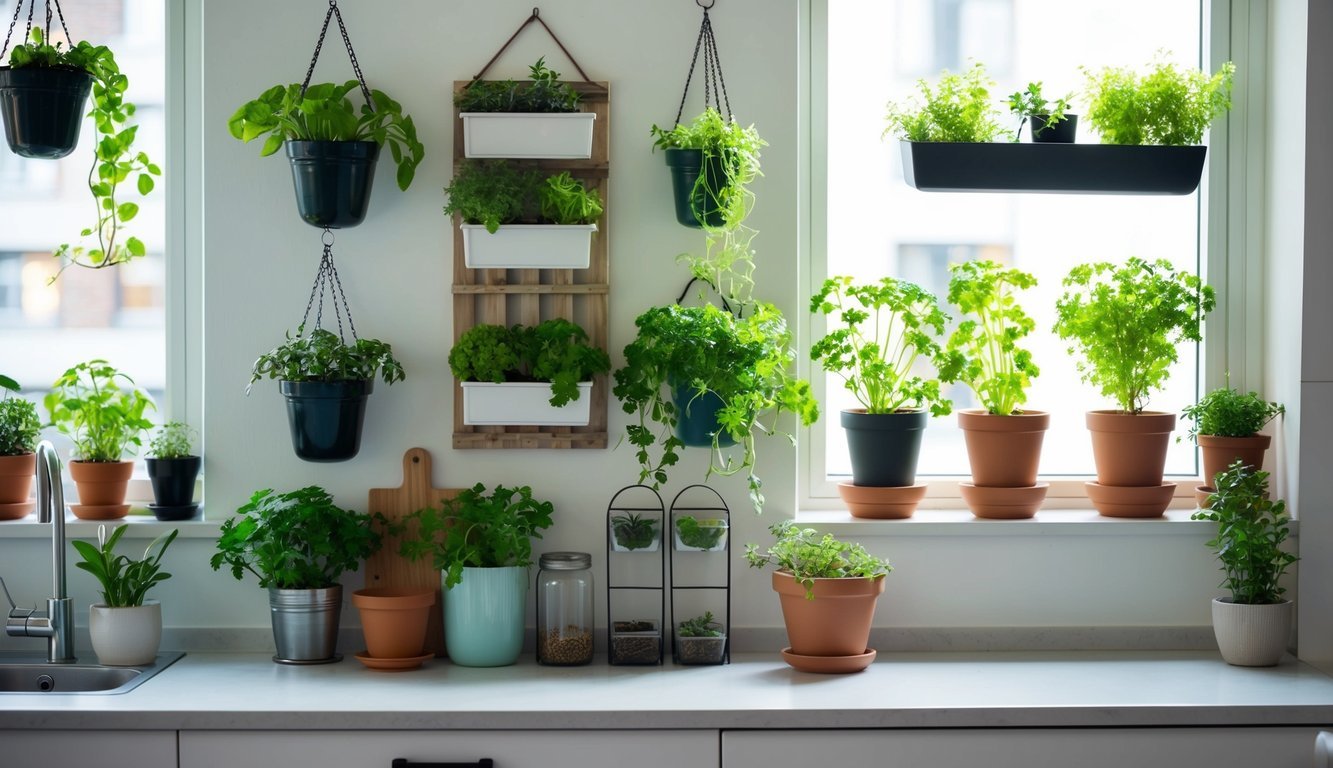
From using windowsills to vertical gardens, there are some fun options that suit any decor.
I’ve discovered that herbs not only provide fresh ingredients for my cooking but also add a touch of greenery to my living space.
With the right approach, I can enjoy the benefits of homegrown herbs, no matter how small my apartment might be.
Window Sill Herb Garden Kit
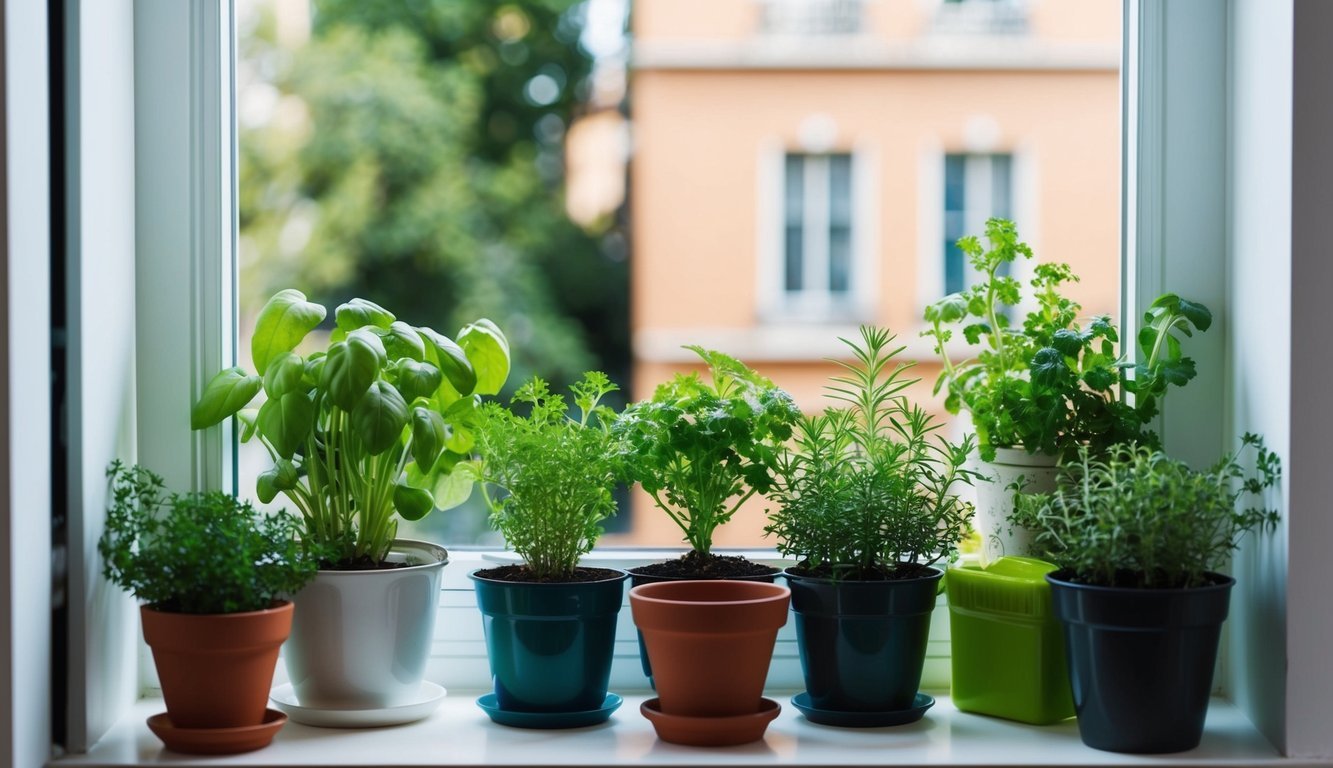
I love having a window sill herb garden kit.
It’s a simple way to grow fresh herbs right in my kitchen.
These kits often come with everything I need, including pots, soil, and seeds.
When choosing a kit, I look for one that fits my space.
Many kits are compact, perfect for narrow windowsills.
Some even feature cute labels, making it easy to identify each herb.
Most herb kits offer popular herbs like basil, parsley, and cilantro.
These are great for cooking and add flavor to various dishes.
Plus, the act of tending to them is relaxing.
Light is crucial for success.
I make sure my windowsill gets enough sunlight.
If natural light is limited, I might consider using a small grow light to help my herbs thrive.
Pruning the herbs regularly keeps them healthy and encourages growth.
It’s satisfying to pick fresh leaves right from my kitchen when cooking.
Overall, a window sill herb garden kit transforms my cooking experience with fresh flavors.
2) Hanging Mason Jar Herb Planters
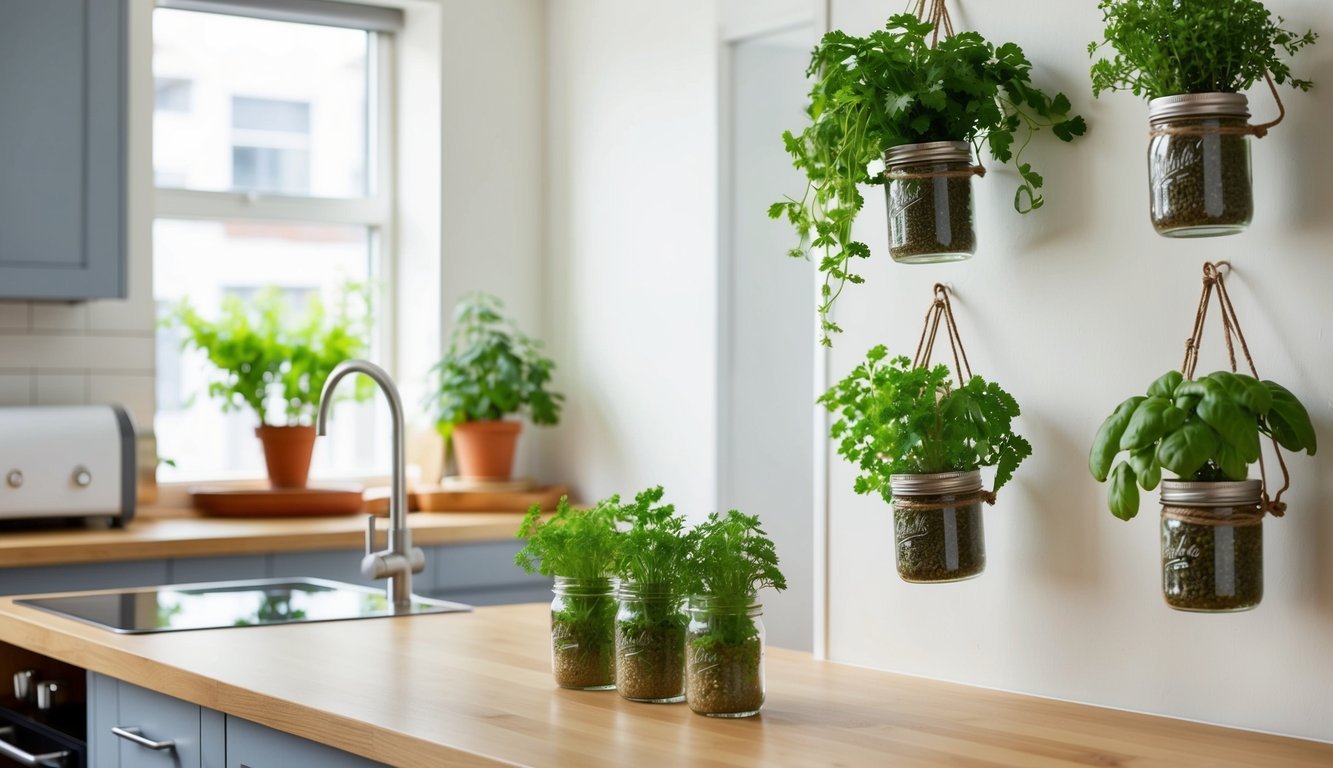
I love using hanging mason jars to grow herbs.
They are practical and add a lovely touch to any kitchen space.
Plus, they take up minimal room, making them perfect for my small apartment.
To get started, I gather mason jars, some sturdy wire, and hooks for hanging.
I fill each jar with potting soil and plant my favorite herbs, like basil or parsley.
Once the jars are ready, I create a handle using the wire.
I twist it securely around the top of each jar, making them easy to hang.
I find a sunny spot in my kitchen to display them.
Hanging these jars not only saves space but also keeps my herbs accessible for cooking.
I enjoy the visual appeal of my herb garden hanging on the wall, bringing a bit of greenery indoors.
Regular watering and occasional pruning help keep my herbs healthy and thriving.
3) Vertical Wall Planter
I love the idea of a vertical wall planter for growing herbs in my small apartment.
It not only saves space but also adds a touch of greenery to my walls.
I can use various materials, like wooden pallets or repurposed shoe organizers.
I just fill them with soil and herbs, and I’m good to go.
Mounting the planter allows me to easily access my herbs.
Placing it near a window ensures they get enough sunlight.
I can even add a drip tray to catch excess water.
Using wall planters, I can mix different herbs, creating a mini garden.
This setup also looks great and can be a fun conversation starter.
Plus, it’s super convenient when I need fresh herbs for cooking.
DIY Pallet Herb Shelf
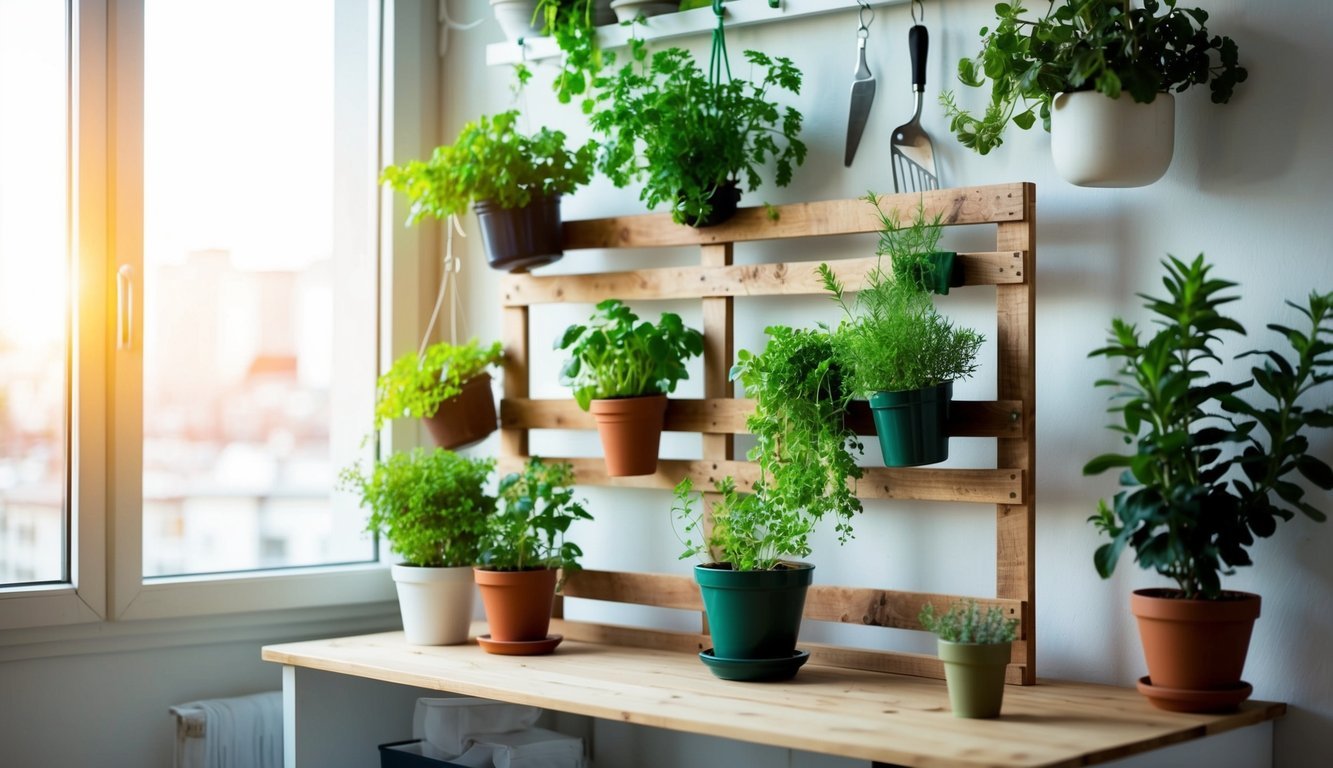
Creating a DIY pallet herb shelf is a fun and practical project.
I love using old pallets for this because they’re often free and add a rustic touch to my apartment.
First, I find a sturdy pallet and give it a good clean.
It’s important to ensure there are no splinters or debris that could harm my plants or me.
Next, I attach pots directly to the pallet using screws or brackets.
This setup allows me to maximize vertical space, perfect for small apartments.
I can easily reach the herbs while keeping them organized.
I choose herbs that I use frequently, like basil and cilantro.
Having them close at hand makes cooking more enjoyable.
Lastly, I position my pallet shelf near a sunny window.
My herbs get plenty of light that way, helping them thrive.
A DIY pallet herb shelf not only saves space but also brightens up my home with greenery.
5) Magnetic Spice Tins for Fridge
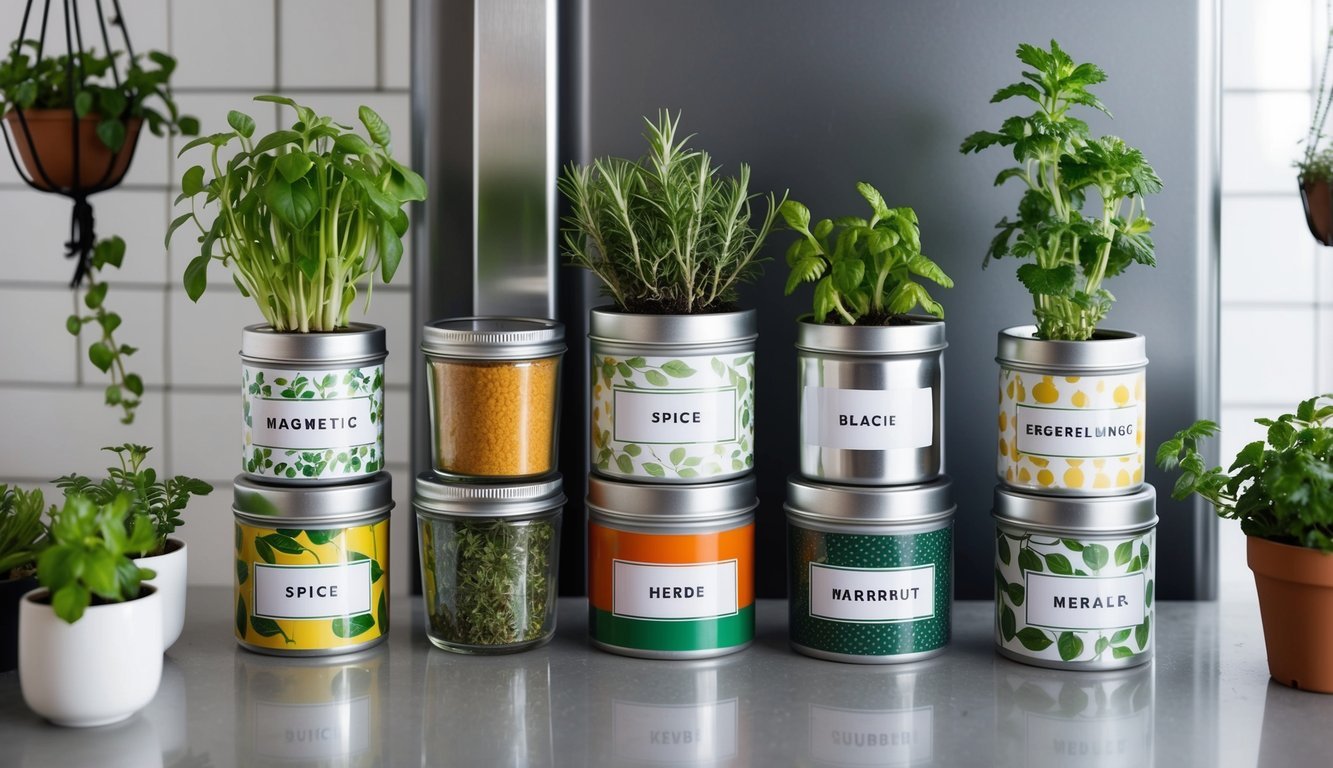
I’ve found that magnetic spice tins are a fantastic way to maximize space in a small apartment.
These tins easily stick to the side of my fridge, allowing me to keep my favorite herbs and spices within reach.
Using magnetic tins not only saves space but also keeps my spices organized.
I can easily see what I have, which makes cooking more enjoyable.
Plus, the tins often come with airtight seals, helping to keep the herbs fresh longer.
Labeling the tins is essential.
I simply use sticker labels to clearly mark each herb, so I grab the right one every time.
It’s a simple way to add a personal touch to my kitchen.
If you’re short on counter space, this method is a game changer.
Just pop the tins onto the fridge, and you’re good to go.
It’s efficient and adds a neat charm to my kitchen decor.
Plus, watering your herbs regularly is easy since they’re right there in view!
6) Teacup Herb Garden
I love the idea of using teacups for a mini herb garden.
They bring a touch of charm and are perfect for small spaces.
Plus, they add a unique decorative element to my kitchen.
To start, I pick a few small teacups with drainage holes.
If my cups don’t have holes, I simply layer the bottom with small stones for drainage.
Then, I fill them with potting soil.
I usually choose herbs like basil, chives, or thyme because they thrive in smaller containers.
Planting just a few seeds or a small transplant per cup keeps it manageable.
Placing my teacup herb garden on my windowsill allows them to soak up sunlight.
I love snipping fresh herbs for my cooking right when I need them.
It’s such a fun and practical way to enjoy gardening indoors!
Aquaponic System for Herbs
I’ve always found aquaponics fascinating as a way to grow herbs efficiently in my apartment.
This system combines raising fish and growing plants in a symbiotic environment.
The fish waste provides nutrients for the plants, and in return, the plants help purify the water.
Setting up an aquaponic system is straightforward.
I place water from a fish tank into grow beds where my herbs thrive.
Each plant, such as sage or thyme, receives nutrients from the fish waste while actively helping clean the water.
The key to success is maintaining the right conditions.
For example, thyme prefers a pH range of 6.0 to 8.0 and sunshine for around 6 to 8 hours daily.
Sage, on the other hand, thrives best at a pH between 6.5 and 7.0, needing similar sunlight.
I love choosing herbs that fit well in this setup.
It’s a creative and sustainable way to grow fresh flavors right in my kitchen.
Plus, the fish add an interesting dynamic to my living space!
Understanding Your Space
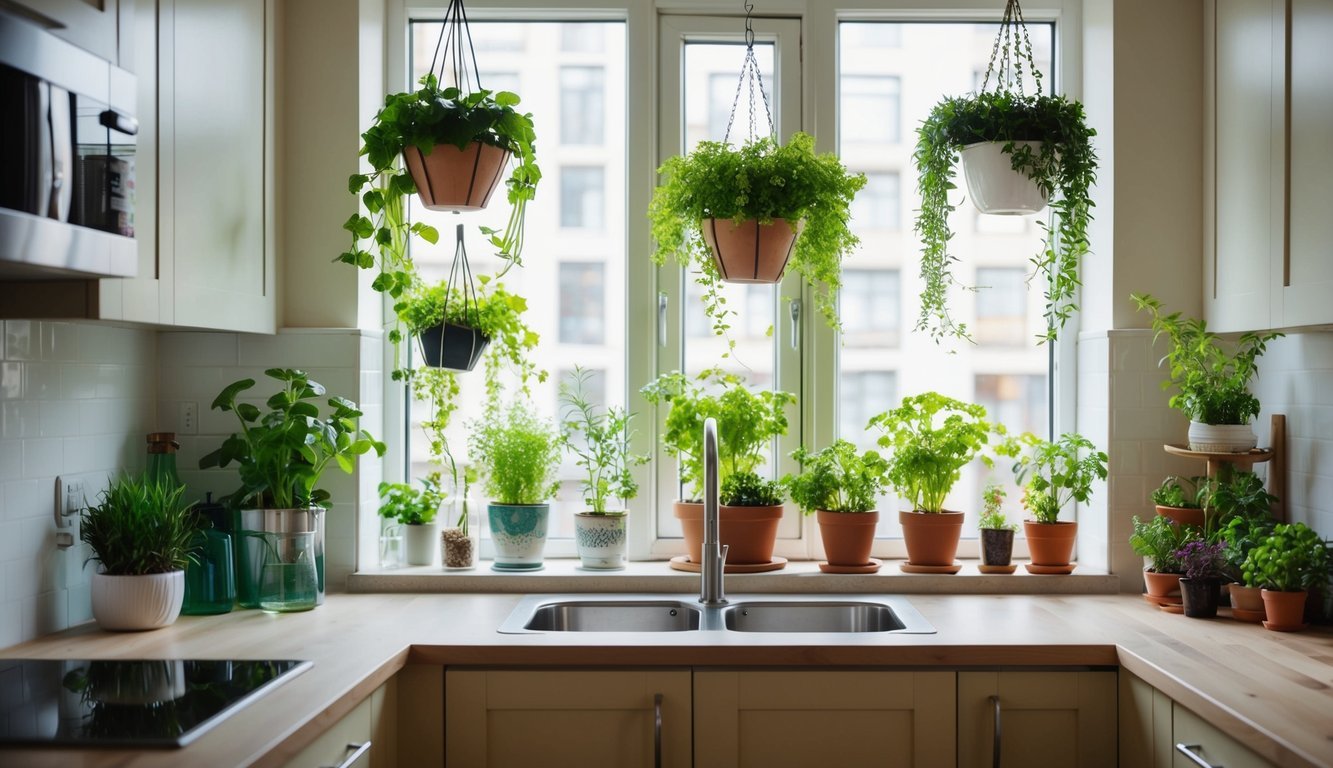
Getting a good grasp of my apartment’s layout is key to successfully growing herbs.
By considering lighting and the ideal spots for my plants, I can maximize growth even in smaller areas.
Lighting Considerations
Light is crucial for healthy herbs.
I’ve learned that different herbs thrive with varying light levels.
For instance, basil loves bright, direct sunlight, while others like mint can tolerate lower levels.
To optimize light exposure, I often:
- Position pots near windows with southern or western exposure.
- Rotate plants weekly to ensure even light distribution.
- Use grow lights for darker areas or during winter months.
Remember, most herbs need at least 6 hours of sunlight daily.
Keeping an eye on this helps me identify which herbs may need a little extra care.
Choosing the Right Spot
Finding the right spot in my apartment can mean the difference between a thriving herb garden and a wilted one.
I tend to choose areas with good airflow and minimal temperature fluctuations.
For indoor herb gardens, I look for:
- Shelves or window sills that are out of the way but still receive light.
- Vertical gardens if space is really tight. They allow me to stack pots and utilize vertical space effectively.
- Balconies or terraces when available, as they provide ample sunlight and fresh air.
Making these choices helps ensure that my herbs not only survive but flourish in my cozy living space.
Utilizing Vertical Space
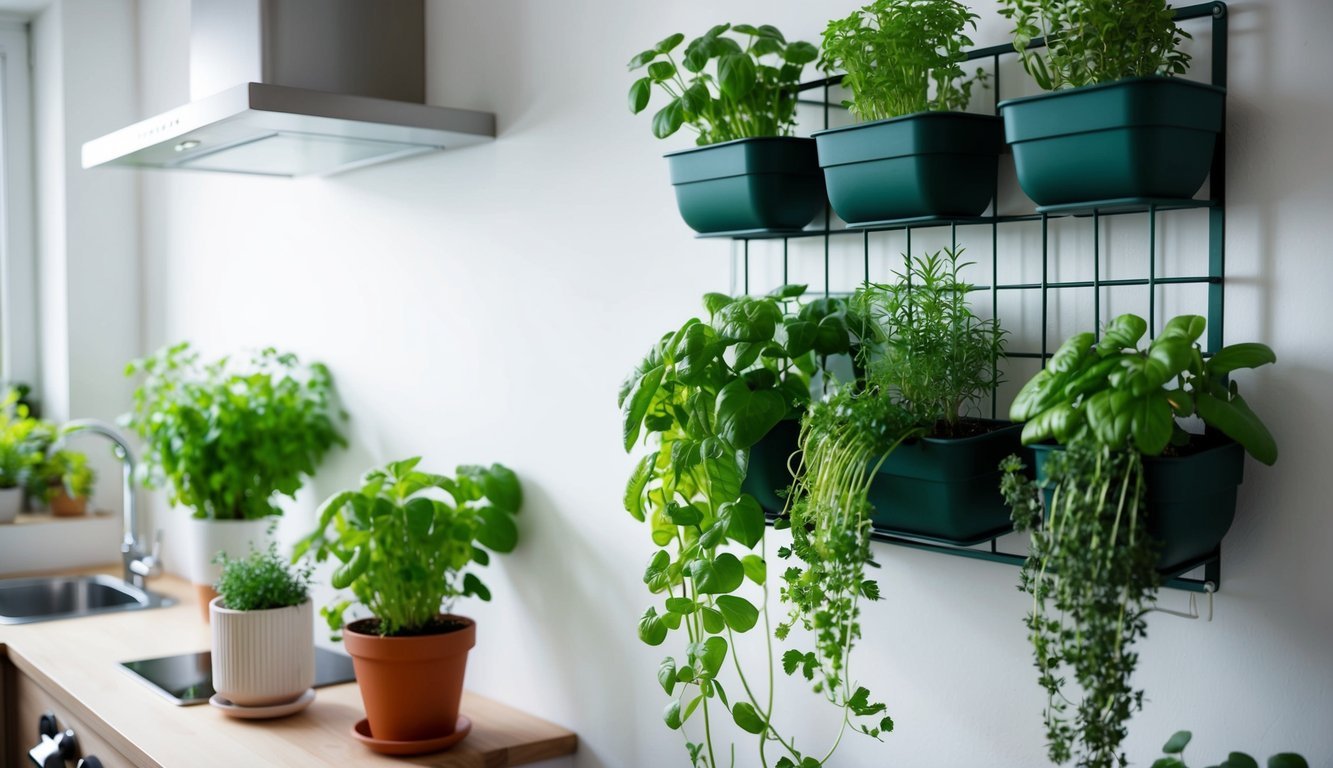
Making the most of vertical space can revolutionize how I grow herbs in my small apartment.
It allows me to create an impressive garden while saving valuable floor area.
Here are some creative approaches I’ve found effective.
Hanging Planters
Hanging planters are a stylish way to incorporate greenery without taking up precious real estate on surfaces.
I love using macramé hangers or simple hooks to suspend pots from the ceiling or walls.
Materials I use:
- Lightweight pots: Terracotta or plastic works well.
- Strong rope or chain: It adds an aesthetic touch but must support the pot’s weight.
By selecting trailing herbs like basil or mint, their growth becomes part of the decor, cascading down as they thrive.
I also make sure to position them near windows for optimal sunlight.
Wall-Mounted Solutions
Wall-mounted solutions are my go-to for maximizing vertical space.
I’ve found some great ideas, like installing shelves or using a pegboard system to hold pots.
For a more DIY touch:
- Vertical grid systems: I create these using wood or metal, where I can attach pots directly to the frame.
- Planter boxes: They can be easily mounted on the wall and arranged at different heights for a dynamic look.
This setup not only provides easy access for harvesting but also transforms a plain wall into a vibrant focal point.
Regular watering is key, so I keep a small watering can nearby for convenience.
Frequently Asked Questions
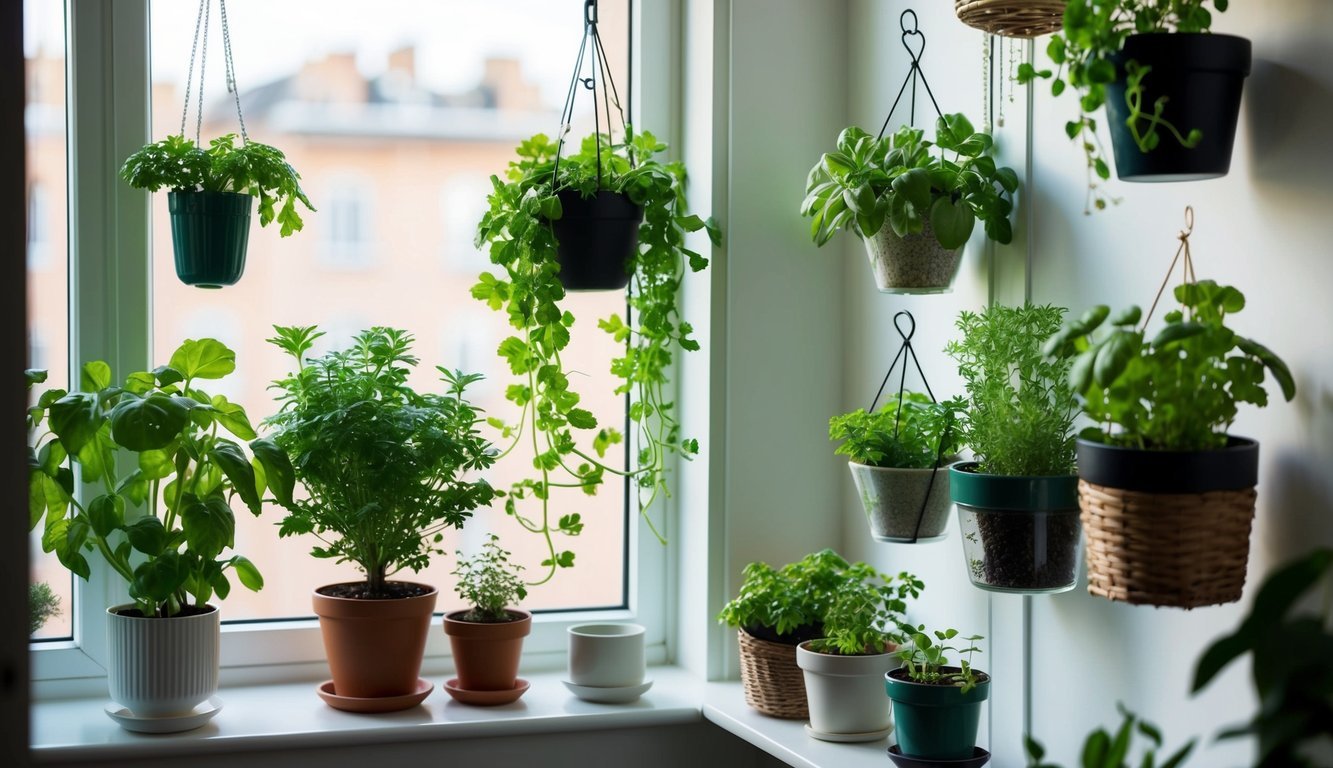
Growing herbs in a small apartment can be fun and rewarding.
Here are some questions I often encounter about managing an indoor herb garden in limited space.
What are some beginner tips for growing herbs in pots?
Start with potting soil that drains well to prevent overwatering.
I often use pots with drainage holes to promote healthy roots.
Herbs like basil and parsley thrive in smaller containers, making them great for beginners.
Got any nifty herb garden designs that work in tight quarters?
Vertical wall planters are fantastic for saving space.
I love using hanging mason jars for a chic look.
These designs not only save space but also add a decorative touch to my kitchen.
Which herbs are like roomies and can share a pot?
Strawberry mint and regular mint get along well in the same pot.
Basil and oregano also make good companions.
Just make sure they have similar light and water needs to stay healthy.
How do I keep a herb garden going indoors through the seasons?
I trim my herbs regularly to encourage growth.
During winter, I place them near a bright window or use grow lights.
This keeps them thriving even when sunlight is scarce.
Can you suggest some cool container combos for herb gardening?
I enjoy pairing basil with tomatoes in a larger container.
Chives and parsley complement each other nicely too.
Mixing taller plants with cascading herbs creates a visually appealing arrangement.
What’s the smartest way to layout a herb garden when space is a premium?
I maximize vertical space by using shelving or hanging planters.
Arranging pots by height can create depth and visual interest.
Keeping frequently used herbs within arm’s reach makes cooking easier too.

